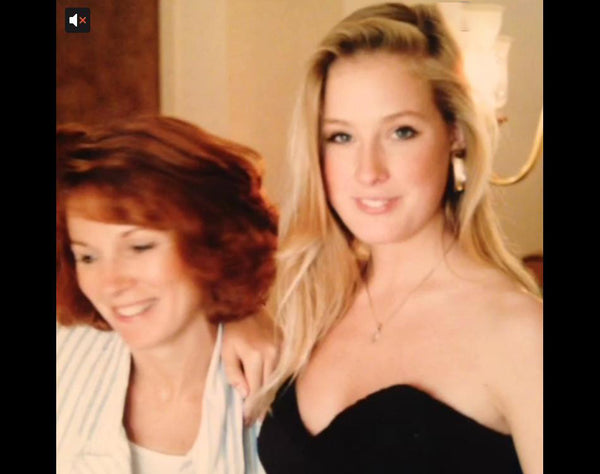
Who is Dita Von Teese?
Heather Renée Sweet (born September 28, 1972), known professionally as Dita Von Teese, is an American film star, burlesque dancer, model, businesswoman, fashion designer, singer, actress, pin-up girl, and author. She is credited with re-popularizing burlesque, earning her the nickname "Queen of Burlesque".
As a burlesque superstar , Dita Von Teese often takes the stage covered in thousands of Swarovski crystals or dressed in haute couture, but it's not just an outfit for the American entertainer: she lives and breathes glamor vintage . that's why she wears sky-high heels, a 1940s-inspired dress that accentuates her tiny waist, and her signature raven hair perfectly styled into victory rolls. Her porcelain face, partly covered with a black veil, is perfectly made up with winged eyeliner and bold red lips. It's like talking to someone straight out of the golden age of Hollywood, and the overall effect makes it hard not to be amazed.
"There are many fans who use vintage glamor in their everyday lives and it's my mission to tell my story of how I become more confident by looking to these eras for beauty, glamor and sensuality,” explains the soft-spoken 47-year-old, whose idea of dressing is a black cashmere jumpsuit “or a round skirt and 50s ballet flats.”
Her world is decidedly glamorous and fans immerse themselves in its splendor, and have the opportunity to dress for the occasion.

"When people come to the shows, one of the main comments I get is 'I've never seen a place so vibrant and glamorous.' People feel like they're in a time machine with everyone dressed well," says Von Teese, who became known around the world in the '90s not just as a pin-up femme fatale, but also as the fiancée of Marilyn Manson , whom she married in 2005 and divorced two years later.

The life she leads today is a world away from her Midwestern upbringing in small town Michigan. Born Heather Renee Sweet , a natural blonde, her father was a machinist and her mother a manicurist. The family, including his two sisters, later settled in California where Von Teese attended high school in Irvine. Her mother was fascinated by old Hollywood and, by proxy, her daughter was captivated by the glamor that characterized that era.
Wearing vintage also allowed you to express yourself without having to pay too much.
“I couldn’t afford my friends’ designer clothes,” she recalls. "I was looking to have a stylish look for less money and in the '80s people weren't really into vintage yet, so it was easy to achieve. It was like a beach high school, so very casual, but I was just trying to find my own style.”

Dita Von Teese in the years (right) with her mother.
Fashion , however, remained a constant passion, from the elaborate lingerie she sold as a sales assistant to the historical costumes she studied.
Although she aspired to become a costume designer, her modeling profession took off, particularly in the fetish world where Von Teese became known for her corset training and distinctive appearance. In a world of blonde glamor models, she established herself as a modern-day Bettie Page and quickly became a Playboy star. By the time she appeared on her first Playboy cover, she had already been doing burlesque for almost a decade, starting in 1992.

Despite the confidence she exudes on stage, Von Teese does not describe herself as an exhibitionist, which is why she delights in the structure of burlesque.
“One of the things I like is that it [burlesque] allows you to control the confidence level,” says Von Teese. “I feel confident on stage, in glamorous costumes and stunningly lit scenes.”
And it strikes a chord with the predominantly female audience .

"When I started in the 1990s, when I was touring strip clubs, I definitely had a more straight, male audience. That changed a lot in the 2000s when I released my first book [Burlesque and the Art of the Teese] and telling my story about why I love burlesque and pin-ups I think that story resonated with people like me.”
That's why she regularly reminds people that they can copy the tricks she uses on stage in real life.
"Now we have all these smart bulbs, so you can create beautiful light pictures in your bedroom, your bathroom, wherever you are. The pink spotlights make everyone look beautiful ."

Described as the queen of burlesque , she is largely responsible for the emergence of neo-burlesque, a combination of classical components, such as striptease, and traditional revue acts, including comedy, magic and dance.
“I like to look outside of striptease for other ways to bring together the glamor and the essence of burlesque,” says Von Teese, who is known for her extravagant accessories, including her signature martini glass and lipstick. giant and bubbly lips. In 2005, she made headlines by wearing nothing but $5 million worth of diamonds to a charity event in New York. A year later, she became the first guest star of the famous Parisian cabaret show Crazy Horse .

“I like working on really complicated routines because it would be boring if it was just easy, but sometimes things don't go as planned,” she admits, recalling the time the lace on her corset fell apart. is caught in his heel. “I always try to anticipate what might happen, but it’s not always possible.”
Although Von Teese has nearly 30 years of stage experience, there is still a feeling of trepidation before each routine. “I feel nervous in the sense that I want people to like the show and I want to give my best performance, but I'm not nervous like, 'Oh my God, I can't do that.' I always say that It’s kind of like the roller coaster before, you’re like, “Oh my God, what am I doing? I can't get out of it now." And then the curtains open and it's a really fun trick. It's natural and easy for me - once I've done the preparation."
His Glamonatrix tour, has been called "the most lavish traveling burlesque show in history". She was in the company of some of the biggest names in the industry, including American Dirty Martini and Australian Zelia Rose .

Glamonatrix lipstick
"This show has a lot of similarities to the last one, The Art of the Teese , in that it follows the same format as my classic American burlesque variety show. However, this time around I interact a lot more with the troupe "It's more fun than ever to start taking the show in this direction rather than having me on stage alone," says Von Teese, who oversees everything from sets and costumes to music and lights.
"I've always presented the show quite organically, with a diversity of body shapes, ages and genders. The diversity of beauty comes naturally because the great burlesque performers are all different people who evolve the art of burlesque So I'm not just asking people to come see my show - it's a careful selection of the best burlesque performers in the world, which really challenges the norms of what is considered striptease and burlesque. burlesque. I'm really proud, not only of what I do, but also of the other artists I shine the spotlight on."

Von Teese always believed that burlesque celebrated diversity and he is happy that this is now widely recognized. The accusation that what she is doing is anti-feminist is also less strong.
"I feel like people are finally understanding that we [women] don't have to apologize for our sexuality or for engaging in a burlesque show, or find ways to make a burlesque show inspiring and empowering. It's about understanding the core values of feminism and knowing that they are no longer what they were in the past. Now it's about respecting each woman's boundaries and point of view. every woman on this subject instead of judging each other.
But she admits it has been frustrating to constantly defend burlesque over the years.

"I just felt like, how many times do I have to explain this? You'd think people would just come to the show and write about what the stage is like, and why people come to a burlesque show at the instead of just judging it from afar That's what really matters to me now - that people come and really look at who's in the audience, maybe ask them why they're there, what they like about a show. burlesque".
As she approaches fifty , she contemplates the next step in her career, and how long she would like to perform, but it will be on her terms, as it always has been.
"There is an evolution that comes as a woman and having a message and something to say to people. I don't do the same shows as in the 1990s. I love producing and every time I create a new show, I ask myself: 'where am I in my life?' 'Do I feel strong, do I feel good, do I still enjoy doing this?' 'Or do I want to manage other artists?' This is my personal preference, and I'm always evolving."











Leave a comment